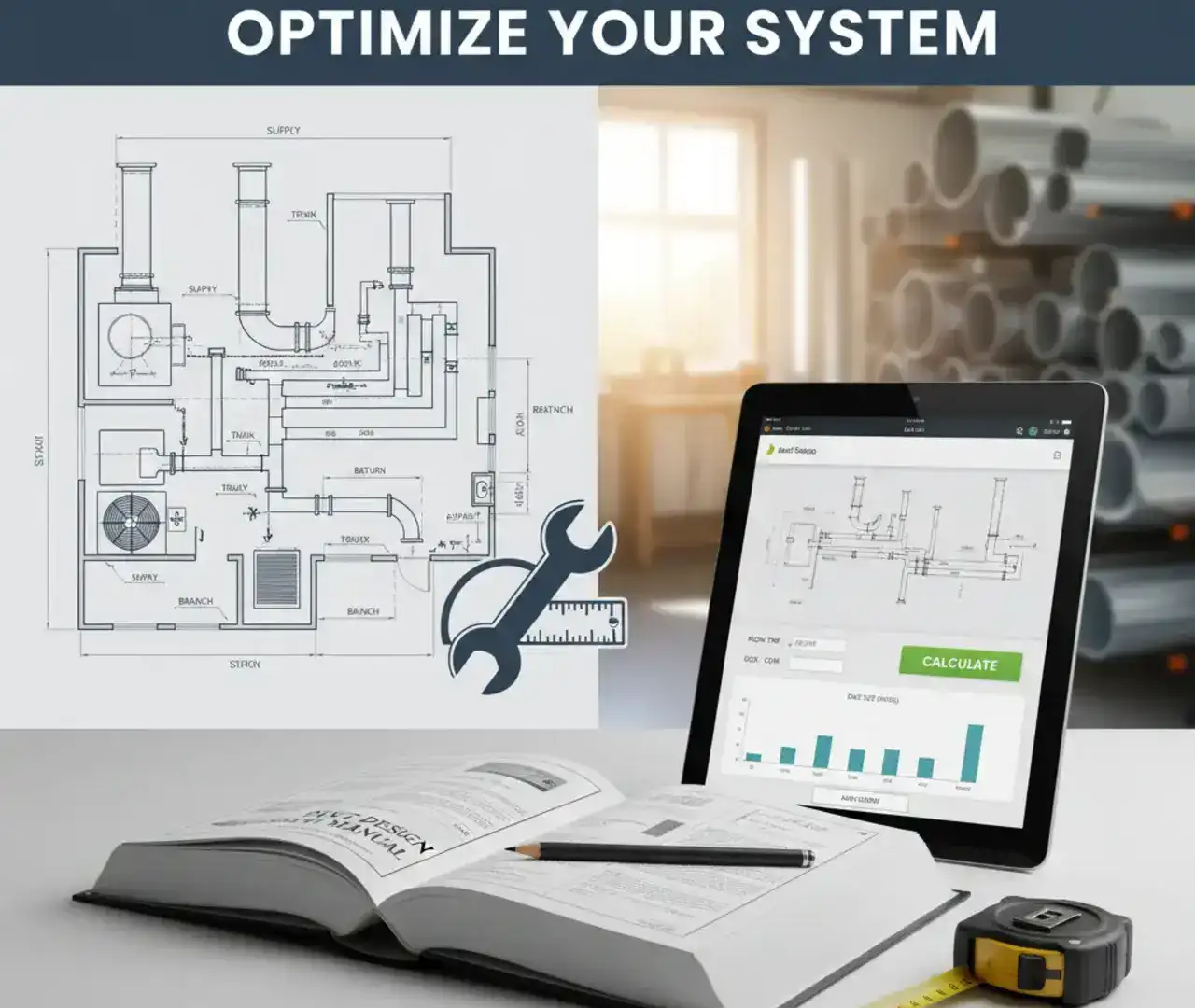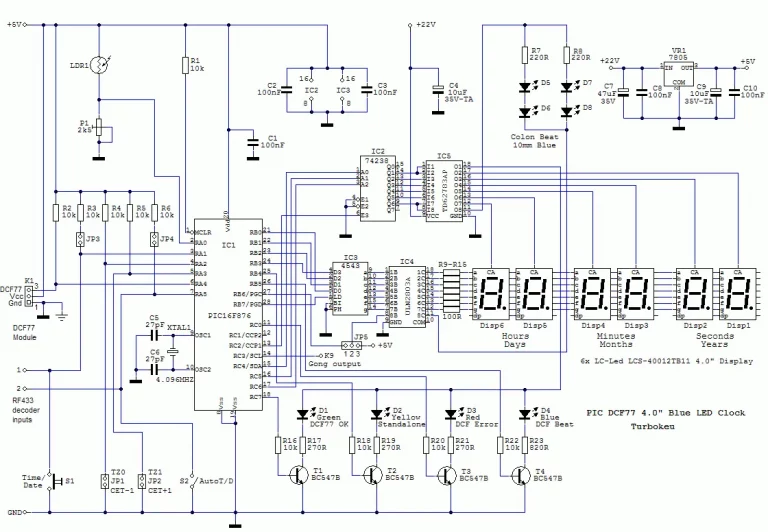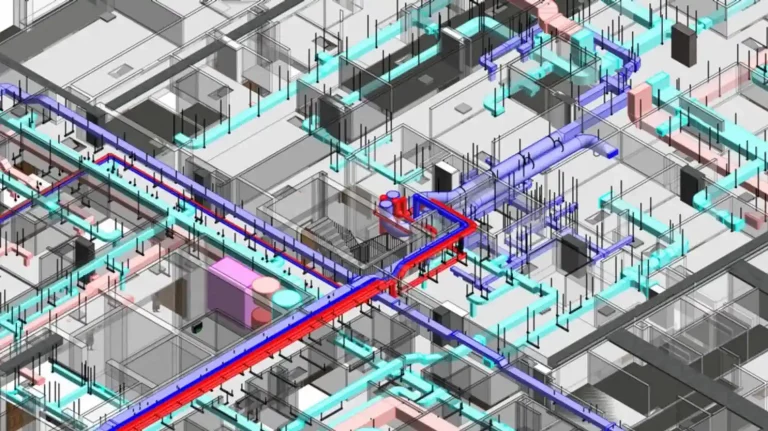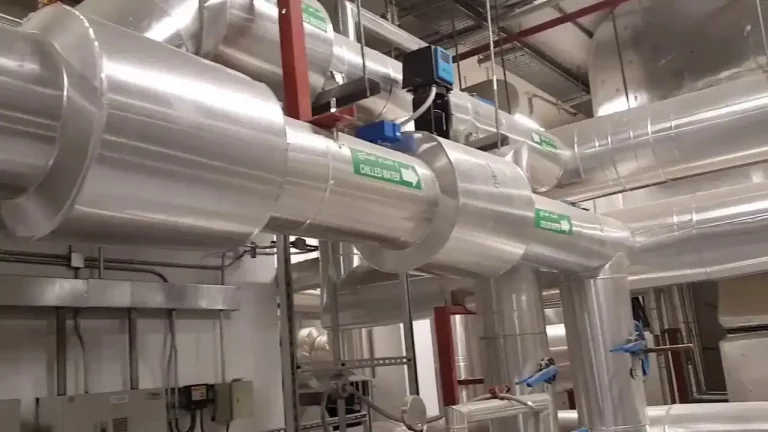How To Calculate HVAC Duct Size: The Complete Guide
For an ideal performance of an HVAC system, it is essential to calculate the HVAC duct size precisely (for long-term efficiency). The more precise the size of the ducts is, the more efficiently your HVAC system will work. Not only that, but its performance will become optimum, and its life will also increase.
So, how crucial is the duct size of an HVAC system? This question will be answered in the section below.
Why Accurate HVAC Duct Size Matters
In heating, ventilation, and air conditioning, proper duct sizing is a compulsion rather than a need. A correct duct will ensure that the process design and installation of an HVAC system are properly executed.
Are you thinking about what a precisely sized duct facilitates? A properly sized duct will facilitate an optimal flow of air according to a space’s needs. Thus, ensuring that a system works adequately.
While basic calculations can guide planning, final sizing should follow U.S. standards such as the ACCA Manual D guidelines and local mechanical codes. Our licensed HVAC contractor or estimator can verify that your design meets these requirements.
Before going further, you must understand the term CFM and why it is critical to calculate it for proper duct sizing.
How to Calculate CFM for Duct Size?
First, know that CFM or Cubic Feet Per Minute refers to the required flow of air for a particular space. To Measure Duct Size, airflow is quantified in CFM. This represents how much volume of air circulates through the ductwork.
The basic formula to calculate CFM is as follows:
Cubic feet per minute = (Volume of a room in Cubic feet) × (per hour air change) / 60
Commonly Employed Techniques for Calculating Duct Size
It is paramount to determine the duct size to achieve the desired efficiency in the performance of an HVAC system. Two key methods are used to calculate the size of ducts:
Velocity Duct Sizing Technique
The velocity method is a simple technique to calculate the size of ducts. It performs calculations based on the principle of maintaining a consistent velocity of air within the ductwork. The formula used for this technique is:
Area of a Duct = Cubic Feet Per Minute / Velocity
Pressure Drop Technique
For calculating the duct size, this technique accounts for the loss of pressure because of the friction in the ductwork. By consulting with experts, an HVAC specialist, accurately duct size can be calculated, using the length of the duct network and the number of fittings.
After discussing the methods to calculate duct size, what is the next course of action? Well, the next thing you have to do is to know the necessary instructions for the calculation process.
Instructions to Follow for Precise Duct Size Calculations
To precisely perform calculations, you need to:
- What are the parameters of a room, such as length, width, and height?
- What is the desired airflow or CFM?
- What is the type of an HVAC system?
By following these instructions, your calculations become more precise. On the other hand, we can also help you immensely with the Duct Takeoff Services. Furthermore, takeoff services can become more accurate by using specialized mechanical estimating software, such as:
- Fast Duct Estimating
- Fast Pipe
- On-Screen Takeoff
REMEMBER THAT LOCAL BUILDING CODES MAY SPECIFY MINIMUM DUCT SIZES OR AIRFLOW REQUIREMENTS, SO VERIFYING THOSE EARLY PREVENTS REDESIGNS LATER.
We hope that the above discussion helps in grasping how duct size is calculated proficiently. But every process has its difficulties, and duct size calculation is no exception. So, we have outlined some of the most frequent problems that can cause disruptions in the seamless process of calculating duct size.
Complications to Factor in with Duct Size Calculations
Erroneous Dimensions
In calculating the duct size, even the slightest measurement error can derail the entire project. So, always double-check the room dimensions to avoid any unnecessary future stress.
Neglecting Airflow Requirements
Carefully analyze the Cubic feet per minute requirements to calculate an HVAC’s Duct Size. This will ensure that the ducts are properly sized to meet the airflow demand across the area.
Do not Disregard Inconsistent Results
A common problem that is often overlooked in the calculation projects is the inconsistency of results. Note that this can escalate and become a critical issue. So, take a moment and compare your inputs and ensure that all the parameters are consistent in each task.
Here are the most frequent complications to look out for. But if you have followed all the instructions and a problem persists, then it is time to consult with an expert. By acquiring our services of an HVAC Estimator, you will have a competent expert at your side. They can provide you with clarification regarding any complication based on their years of experience.
Closing Remarks
To achieve optimal flow of air in an HVAC system is more than just a technicality. It is about obtaining a comfortable environment that is going to be inhabited. Thus, it is certain that the significance of proper sizing in ducts is more than just a necessity. Because if ducts are undersized, it can lead to unnecessary noise and waste of energy. Contrarily, oversized ducts can result in operational inefficiencies. By attaining accurate duct size, notable energy savings can be assured by elevating a system’s performance.
FAQ’s
Q)Why is a proper duct size important?
A)Proper duct size is essential; if that is not the case, then it can result in unwanted noises or energy loss. According to surveys, accurate duct size can yield energy efficiency up to 22.3%
Q)What factors influence the size of ducts?
A)The factors that influence the size are:
An HVAC unit’s capacity
Air distribution system layout
Airflow requirements of a specific area
Q)How is the flow of air measured in HVAC systems?
A) airflow is measured in Cubic Feet Per Minute, which dictates how much volume of air is passing through the ducts.
Q)How HVAC duct size calculation affect by technological advancements?
A)Innovations in technology have led to more accurate calculations, thus leading to elevated performance efficiency of an HVAC system.
Q)Is regular maintenance necessary for an HVAC system?
A)Regularly maintaining an HVAC system can result in a reduction in energy consumption up to 42.5% to 54% and it can also improve the airflow.







